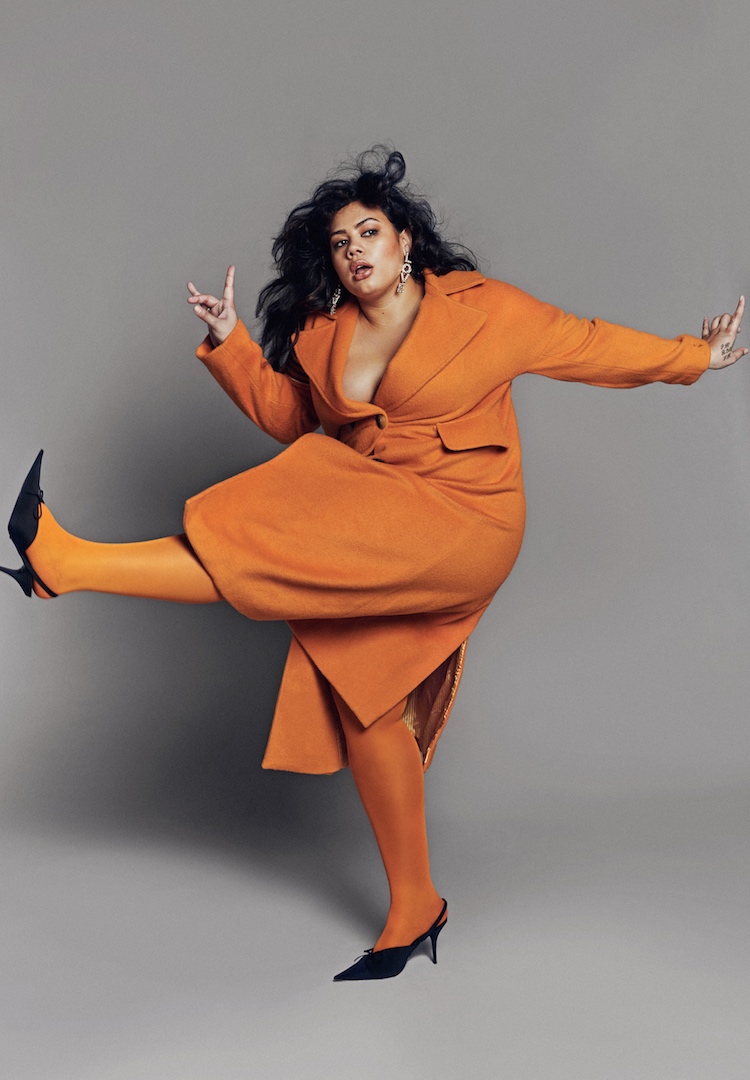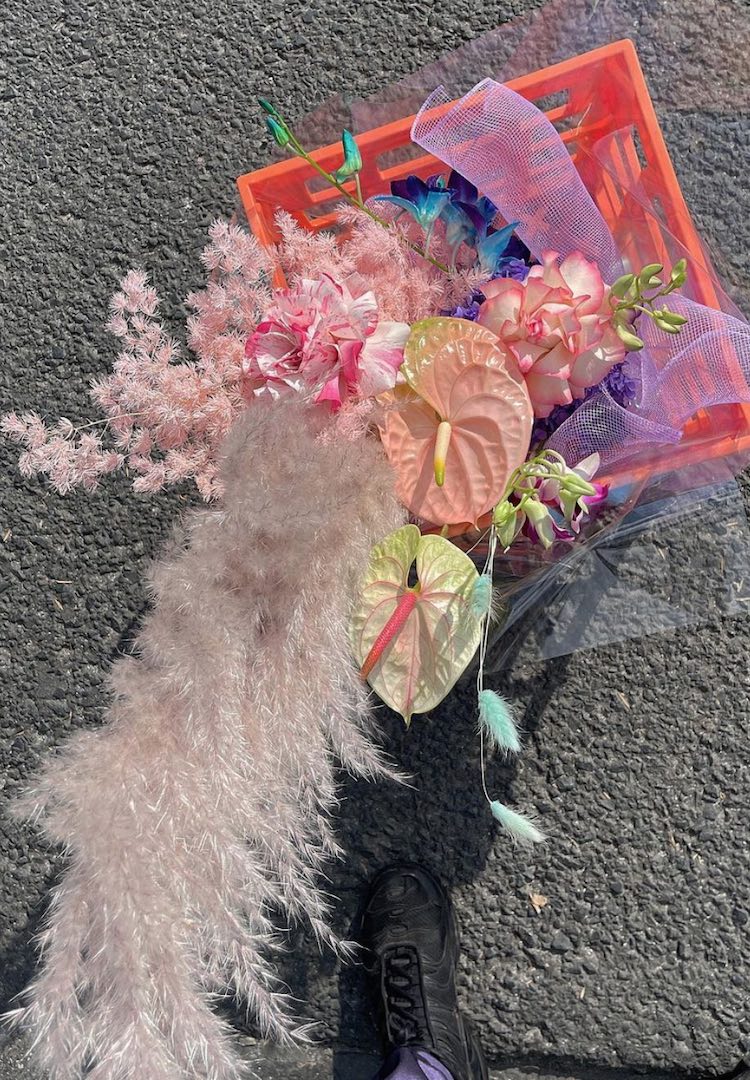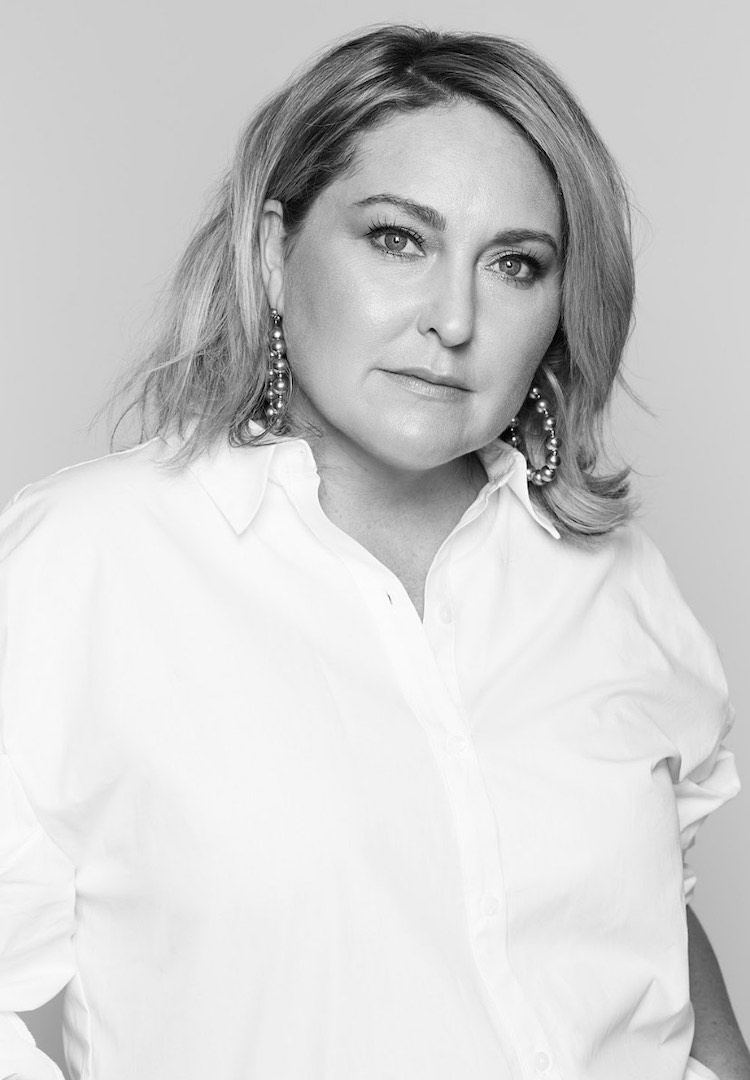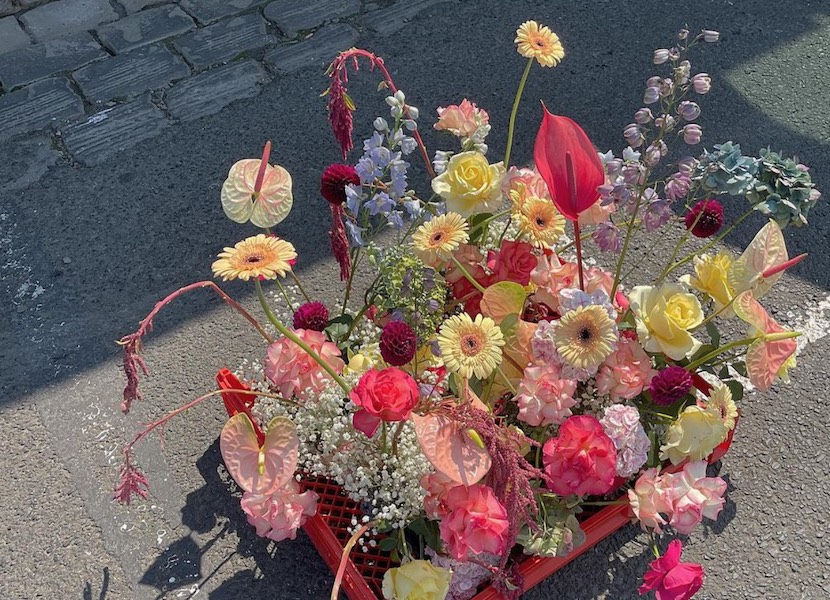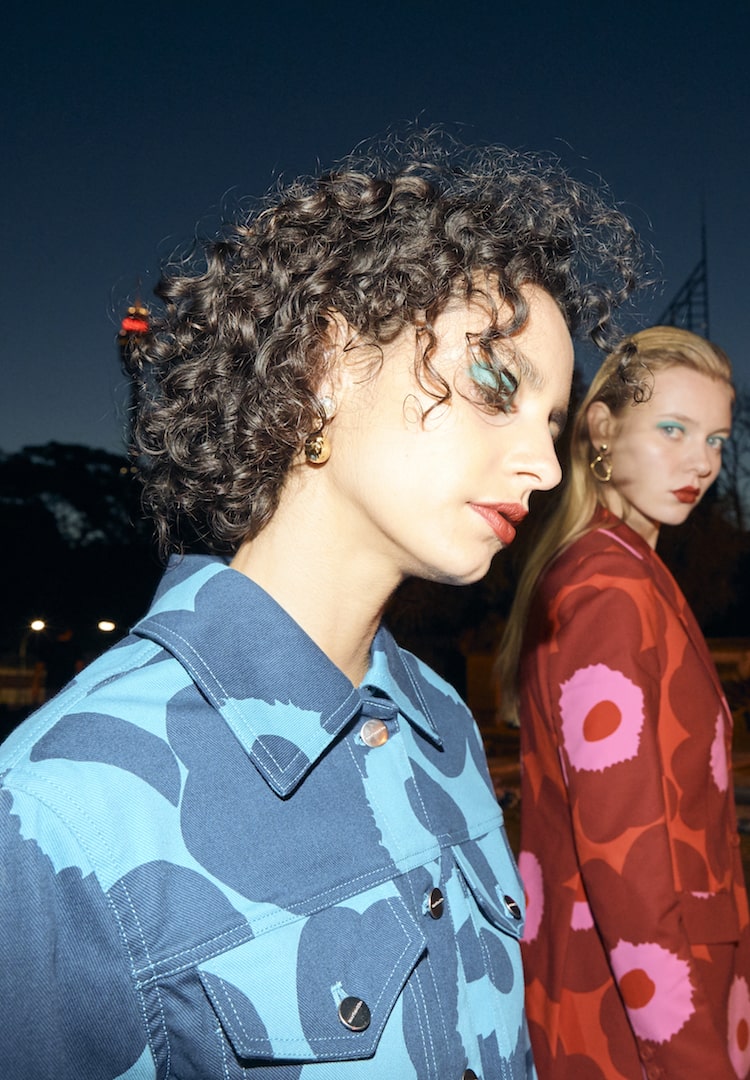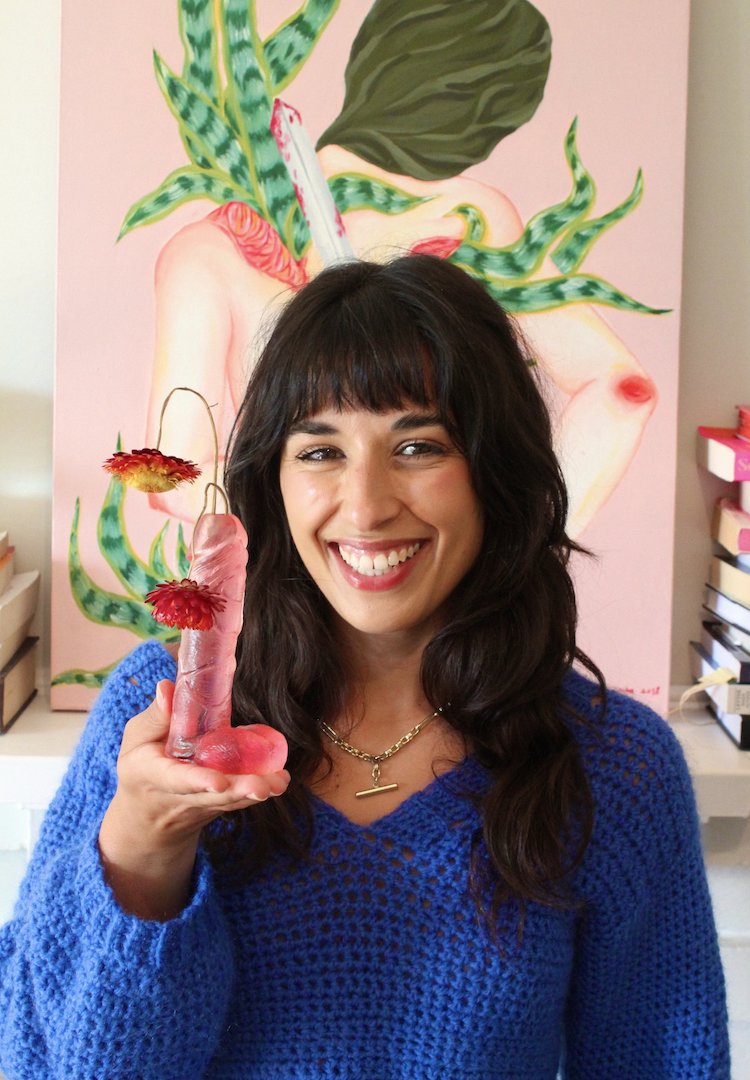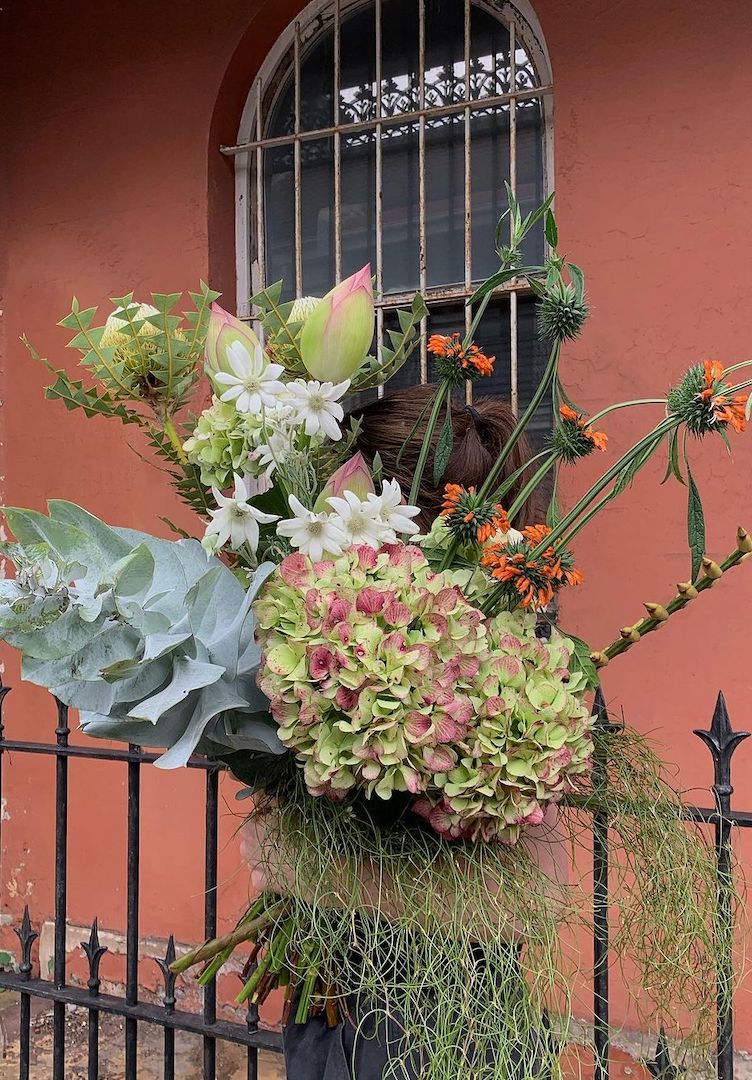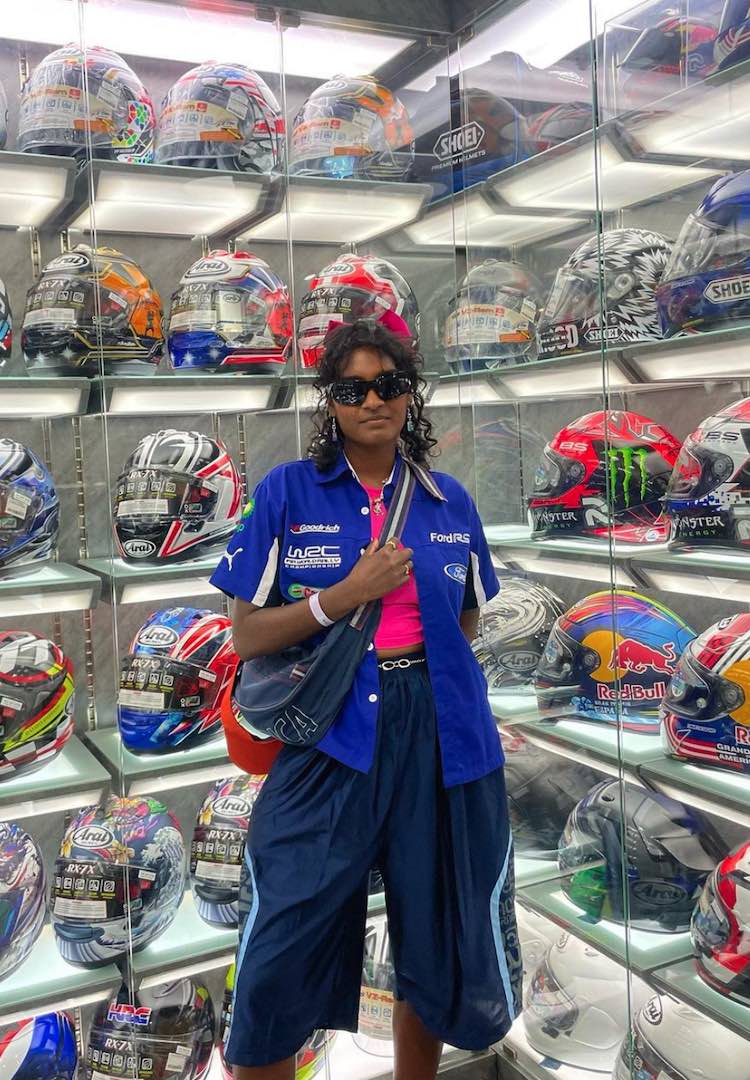A new generation of Australian florists is leading the industry in a more sustainable direction
IMAGES VIA BLOSSM BBY
WORDS BY EMMA MAIDENS
Fresh as a daisy.
Once reserved for Valentine’s Day and sick grandmas, flowers have found themselves back in our homes, offices and Instagram feeds. Thankfully, cellophane and rainbow roses have been replaced by architectural designs and unique flora, as a new generation of Australian florists shakes up the industry, reclaiming their work as an art form.
Kayla Moon is the director of Melbourne-based florist Xxflos. Discovering her love of flowers while using gardening to ground herself, she boasts eight years in the industry and a manifesto outlining her stance that floristry is an art form, not just a trade.
This is an obvious and shameless plug to get you to sign up to our newsletter. You can make it worth our while and do that here.
Originally a makeup artist, Ness Scarkie discovered a talent – and a market – for flower crowns for the brides she was working with. Soon, the floral side of the business quickly surpassed the makeup and she extended her offering, launching The Nesst in 2011.
Set on a career with flowers from a young age, Sheridan Gretta Holzworth perfected her craft at one of Sydney’s top experimental florists, Hermetica. Finding her niche creating whimsical designs, she returned to Brisbane and launched her baby, Fiflar Floral.
India Robinson of Blossm Bby attributes her unique designs to a lack of ‘traditional’ training and boasts a cult following thanks to her signature milk crate creations, regularly working with brands like Suku Home and Sans Beast.
Speaking to these four talented Australian florists, I began to understand the necessity for industry-wide change in the face of the current environmental crisis. In the Western world, around 80 per cent of flowers you find in florists are imported – when you take into account the carbon released from transportation, things get unsustainable pretty quickly.
But this new cohort of florists is focused on changing this, and although shifting consumer’s perceptions of floristry has been no easy feat, and the industry still faces challenges when it comes to wasteful practices, it’s comforting to know that these florists view sustainability practices as integral to the longevity of their art form. With this generation’s dedication to educating customers, it appears the industry is in safe (and very dexterous) hands.
View this post on Instagram
The hashtag #floraldesign has over five million posts on Instagram. Has Instagram been a catalyst for changing people’s perception of floristry and valuing it more as an art form?
Ness Scharkie: Definitely, there’s been a huge movement within the floristry community using Instagram to educate consumers on the value of floral arrangements. It’s not just a bunch of flowers that have been thrown together, it’s years of investment by the creator. Intricate mechanics, 3am starts and money spent on sourcing quality flowers are all investments in the art and I think people are starting to get that.
Kayla Moon: Instagram has helped by tying into the duality of floristry. It provides both a platform to display your work in gallery form, while allowing you to link to a product on a website. Makers of all industries are benefiting as it allows us to exhibit our work to a growing fan base, while also helping to connect with new customers.
India Robinson: It’s definitely helped people to see florals as a medium for creating a true art form. It’s a really exciting time to be in the industry, alongside many other amazing designers expressing their art through other mediums too, not just through flowers. We all push each other to think bigger. Instagram has helped people to recognise the versatility of flowers and how they can be repurposed as everlasting, ever-changing art pieces.
View this post on Instagram
Has unlimited exposure to other florists via Instagram helped or hindered the development of your personal style?
Sheridan Gretta Holzworth: It can sometimes make you feel as though you need to chase current trends, but, in the end, people aren’t paying for that. People are paying for a creative service, which is what I want to offer. Using my own eye and experience lets me create true artistic pieces.
KM: Elements of both, as while it’s great for inspiration it’s also easy to fall into the comparison trap. I try to remember to celebrate the design principles in other people’s work, rather than comparing my work to others. Instagram also gives you greater access to see when other people have borrowed from your work, which I choose to use as motivation for new ideas rather than getting pissed off.
NS: At times I have fallen into the trap of second-guessing my work and not posting because of that. But, then I discovered how useful Instagram is for manifesting the clients I want for my business. Ultimately, it’s important to remind yourself to embrace your own talent.
View this post on Instagram
How have you adapted to increase sustainability within your work?
NS: After beginning with the delivery of bouquets I began feeling inherently sick about the wastage created, so I spent time researching alternative sustainable products. It’s often more expensive, but the benefits for both the planet and my mind space were worth it. Now, about 80 per cent of my practices are conducted in a sustainable way; even my greeting cards are printed on recycled paper.
IR: At Blossm Bby we make an effort to cut our orders off 24 hours before the delivery date to ensure we only buy what we need. We never throw products out, and if there’s any leftover we dry and re-sell them. It’s a constant balancing act between keeping true to the aesthetic of Blossm Bby, while still being sustainable and considered in our approach.
SGH: During the lull in business when COVID-19 hit, I focused on ways to increase sustainability within my work, specifically reducing my floral foam [an extremely absorbent foam that’s used to keep arrangements hydrated and to support a flower or foliage stem in the desired position. Unfortunately, it’s made of plastic and is non-biodegradable, often being discarded after one use.] One of the biggest ways to reduce negative impacts is to buy locally instead of imported, which can be easy or difficult depending on how many local growers you have access to.
View this post on Instagram
Do you think there’s more the floral industry could be doing as a whole to become more sustainable?
SGH: Yes, essentially if you use it, people are going to request it. If you’re constantly making arbours with floral foam, that’s what people will request. Creating beautiful pieces in a sustainable way demonstrates to clients that they can achieve the look that they’re after in a way that’s also good for the planet.
KM: Absolutely. If we’re abolishing the use of plastic bags it makes no sense to continue using plastic wrapping for flowers. Also, building relationships with local growers needs to be prioritised. It’s hard to tell a customer ‘no’ because a particular flower isn’t in season, knowing they can just get it somewhere else that’s chosen to import them. So, I think we really need to see a collective shift within the industry to avoid importing.
Have you witnessed customers becoming more interested in sustainability when choosing their flowers and florists?
IR: I know from experience that nine times out of ten, knowing a flower is imported won’t deter the customer from purchasing it. There’s been a big discussion within the industry about the popularity of imported products and it’s been vocalised that you have to pick a side on how you feel. I believe that it’s up to us as florists to educate our clients about the safe disposal of potentially toxic preserved products.
KM: The downside to the art factor can be that more customers want the ‘trendy’ flowers, regardless of season. Most consumers aren’t aware of how un-sustainable the floral industry can be, so it’s up to us as florists to change our practices and educate our clients.
View this post on Instagram
Keen to learn more about sustainable floristry? Try this.

